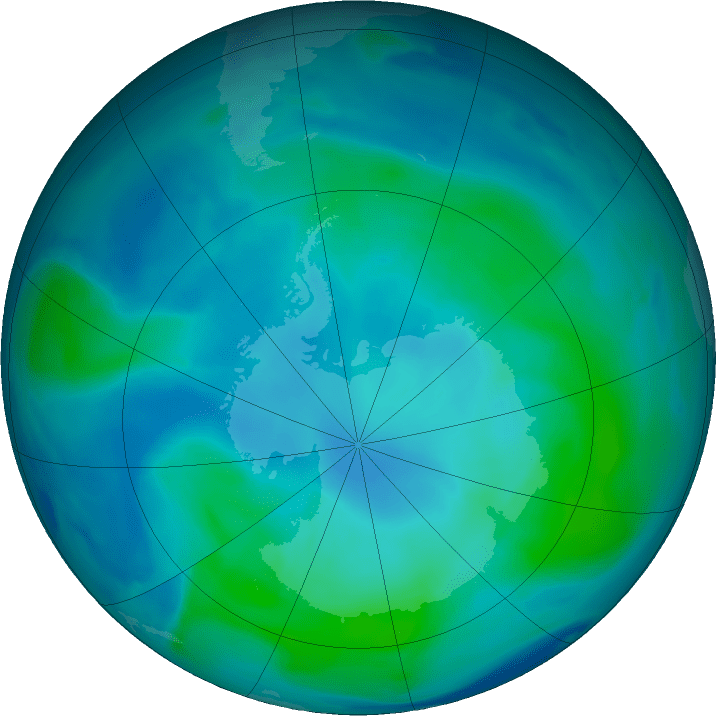The James Webb Space Telescope isn’t even fully operational yet, but researchers are getting more and more excited about what it can do. In a recent study, researchers claim we may be on the cusp of being able to discover other civilizations based on specific types of pollution in their planets’ atmosphere.

The alien ozone hole
Human society has changed a lot over the centuries, but the shifts in the past 200 years have been truly mind-bending. The Industrial Revolution changed how many things work, fueling, well, a revolution in our society. If you were a patient alien scouting the Earth from close by (or from farther away, but with a good enough telescope) you may have seen the signs of this industrial revolution happening through the emissions we produced by burning fossil fuels.
But they could see other forms of pollution even better.
Chlorofluorocarbons (CFCs) are a type of chemical notorious for causing the ozone hole in the 1980s (until regulations entered into force to address the problem). They’re produced industrially as refrigerants and cleaning agents — and if an alien civilization would resemble ours, it would likely also start producing them at some point. CFCs are also very unlikely to appear naturally so if you see them in a planet’s atmosphere, someone is producing them artificially. Furthermore, even if a civilization stops producing them or reduces their production (like we did), they still have a long life in the atmosphere, meaning they could be detected long after they’ve been produced.
This brings us to an interesting point: our most clear sign of civilization may also be one of our worst impacts on the planet — pollution. We don’t really know whether this would also be the case for an alien civilization but there’s a decent chance it is. Now, we could also have a way to detect this, thanks to the James Webb Space Telescope (JWST).
Looking for pollution on alien planets isn’t the main objective of the JWST, and its capability in this regard is limited. For instance, if a planet is too bright, it could drown out the CFC signal. So the new study focused on M-class stars — a type of dim, long-lived red dwarf. Researchers believe M-class stars make out the majority of stars in the universe.
A team of researchers led by Jacob Haqq-Misra, an astrobiologist at the Blue Marble Space Institute of Science, analyzed the JWST’s ability to detect CFC around a TRAPPIST-1, a typical red dwarf relatively close to Earth (40 light-years away). TRAPPIST-1 also has several Earth-sized planets within the habitable zone, so it would be a good place to start looking for alien civilizations (although M-stars, in general, aren’t considered to be conducive to life).
According to the study, there’s a good chance that the JWST could be able to detect CFC in this type of scenario.
“With the launch of JWST, humanity may be very close to an important milestone in SETI [the Search for Extra-Terrestrial Intelligence]: one where we are capable of detecting from nearby stars not just powerful, deliberate, transient, and highly directional transmissions like our own (such as the Arecibo Message), but consistent, passive technosignatures of the same strength as our own,” the researchers write in the study.
Funny enough, this detection isn’t necessarily reciprocal: just because we can detect potential CFCs around a planet doesn’t necessarily mean aliens could do the same for us. Remember when we said in order for the method to work, the planet needs to not be too bright? Well, the Sun is pretty bright, and it sends out enough light that it would obstruct much of the useful signal. So if an alien civilization were to exist closeby, there’s a chance we could be able to spot them without them being able to do the same thing to us. Of course, this is all speculation at this point, but it’s something that astronomers are looking into as JWST will soon become operational.
The telescope is currently in its calibration stage. James Webb is expected to offer researchers an unprecedented view of the universe, focusing on four main objectives:
- light coming from the very first stars and galaxies that formed after the Big Bang;
- galaxy formation and evolution;
- star formation and planet formation;
- planetary systems and the origins of life.
The study was published in arXiv and has not been peer-reviewed yet.
Was this helpful?



